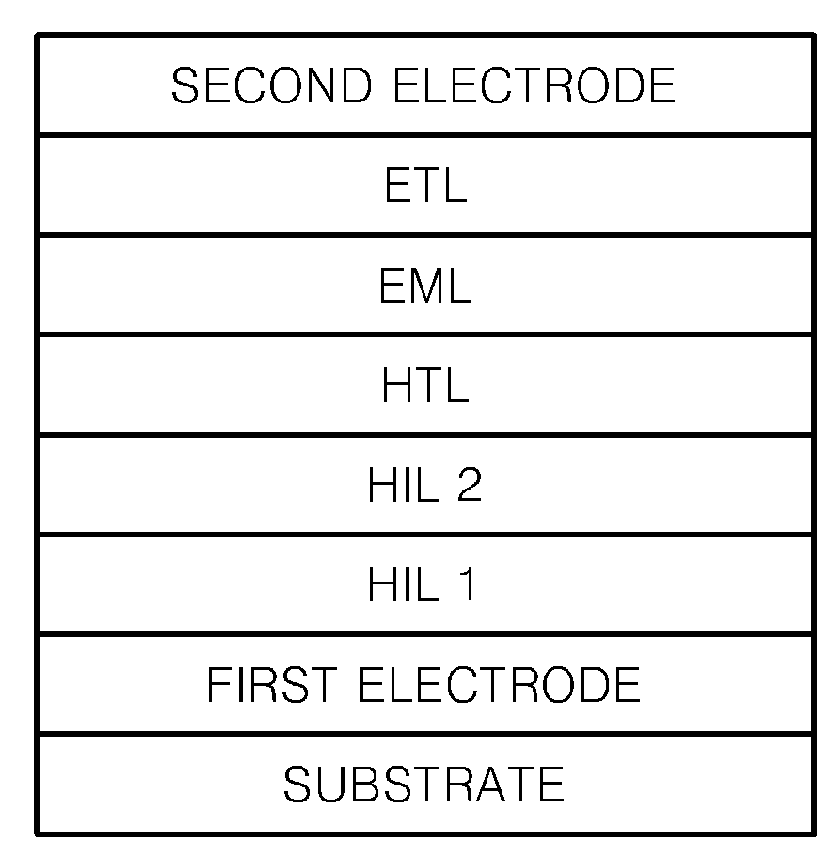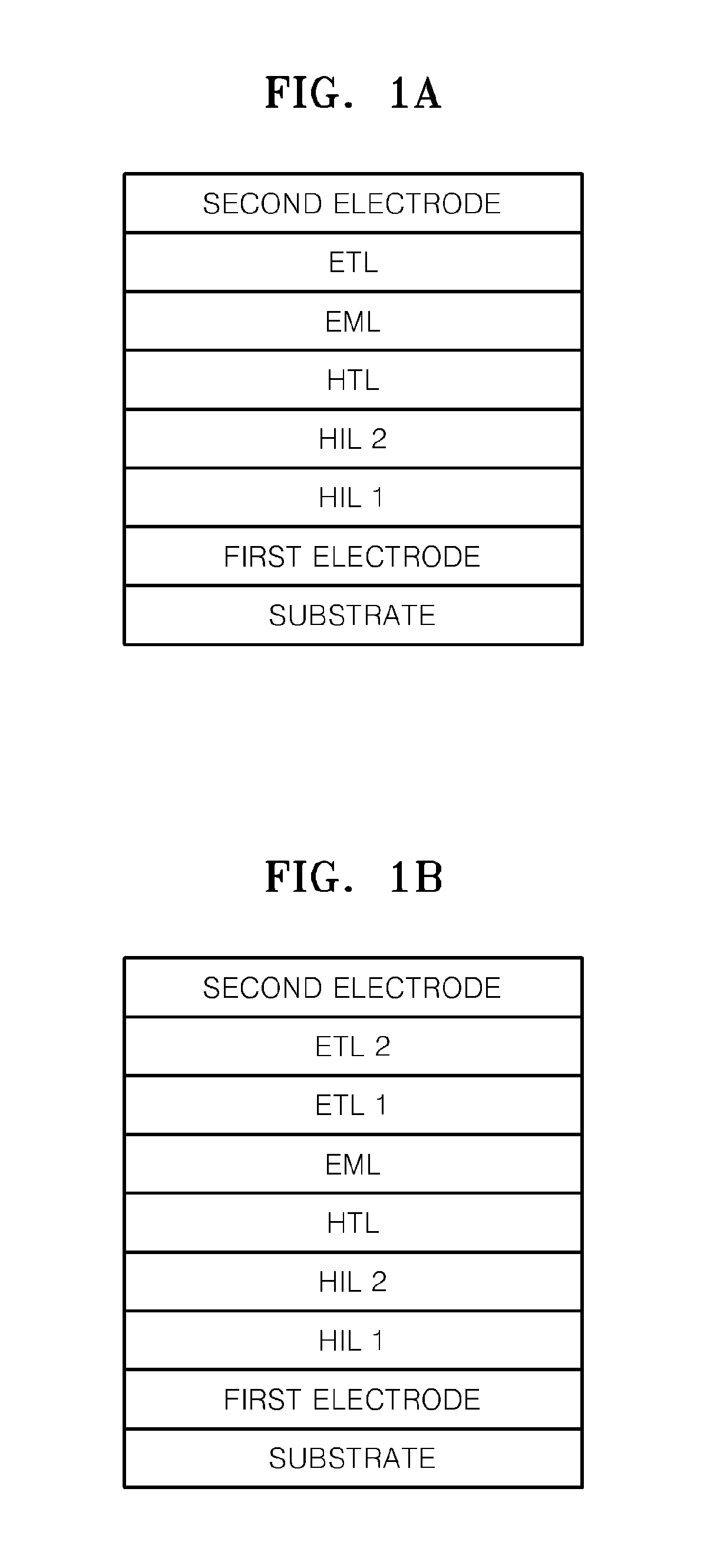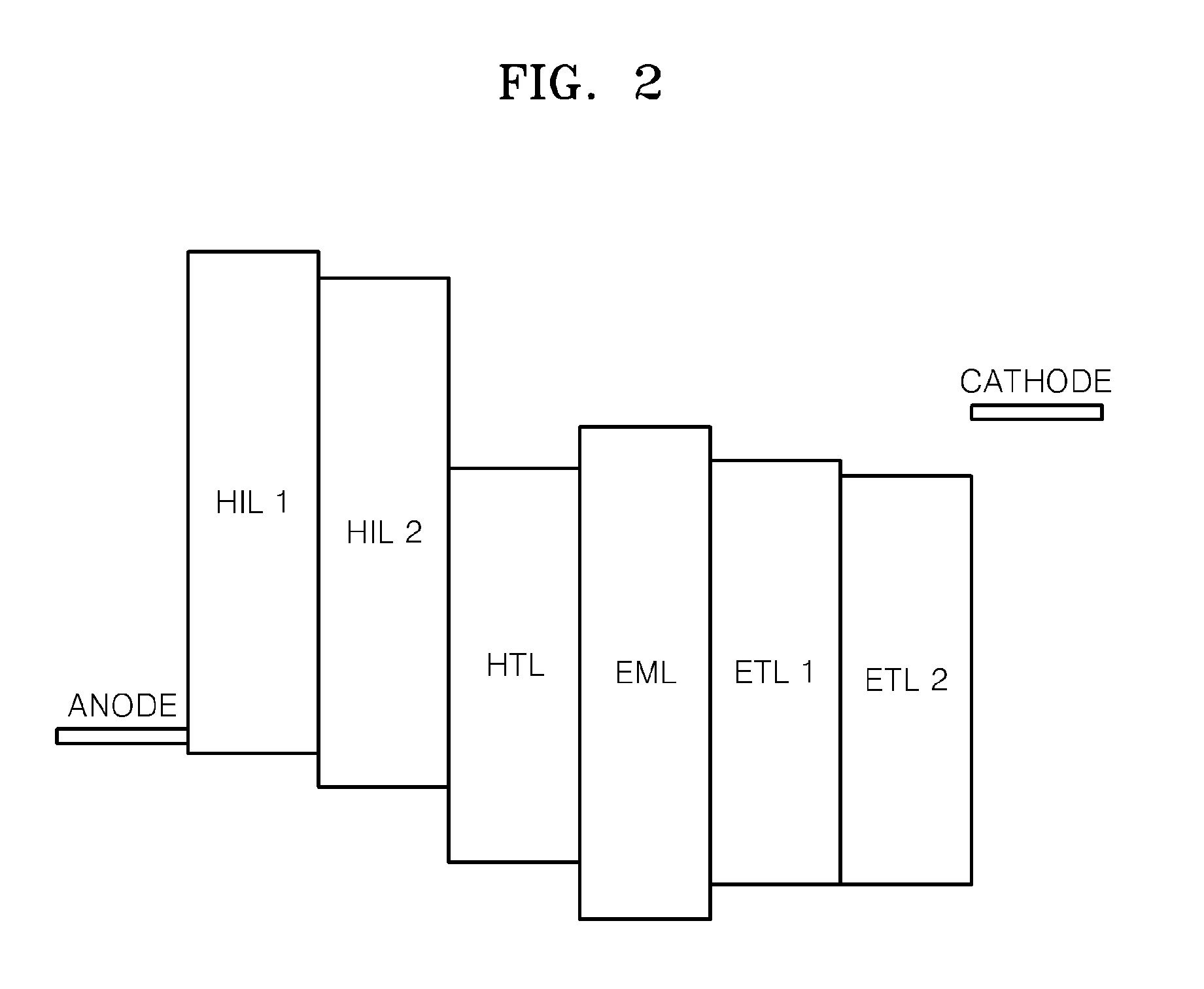Organic light-emitting device
- Summary
- Abstract
- Description
- Claims
- Application Information
AI Technical Summary
Benefits of technology
Problems solved by technology
Method used
Image
Examples
example 1
Preparation of OLED
[0067]An anode was prepared by cutting a Corning 15 Ωcm2 (1200 Å) ITO glass substrate into a size of 50 mm×50 mm×0.7 mm, and sonicating for 5 minutes using isopropyl alcohol and deionized water, then irradiating UV light for 30 minutes and exposing the substrate to ozone to clean the substrate.
[0068]NPB and MgF2 were co-deposited on the anode to form an HIL1 having a thickness of 50 Å. Next, NPB and MoOx were co-deposited on the HIL1 to form an HIL2 having a thickness of 600 Å.
[0069]NPB was vacuum-deposited on the HIL2 to form an HTL having a thickness of 40 nm. After forming the HTL, 100 parts by weight of Alq3 as a host, and 3 parts by weight of Coumarin (C545T) as a dopant were vacuum-deposited on the HTL to form an EML.
[0070]Then, 50 parts by weight of Li2O and 50 parts by weight of Alq3 were vacuum co-deposited on the EML to form an ETL having a thickness of 35 nm.
[0071]Then, an Al cathode was formed by vacuum-depositing 3000 Å of Al on the ETL, thereby compl...
example 2
Preparation of OLED
[0072]An OLED was manufactured using the same method as in Example 1, except that the ETL was formed by vacuum co-depositing 50 parts by weight of lithium quinolate and 50 parts by weight of Alq3.
PUM
 Login to View More
Login to View More Abstract
Description
Claims
Application Information
 Login to View More
Login to View More - R&D
- Intellectual Property
- Life Sciences
- Materials
- Tech Scout
- Unparalleled Data Quality
- Higher Quality Content
- 60% Fewer Hallucinations
Browse by: Latest US Patents, China's latest patents, Technical Efficacy Thesaurus, Application Domain, Technology Topic, Popular Technical Reports.
© 2025 PatSnap. All rights reserved.Legal|Privacy policy|Modern Slavery Act Transparency Statement|Sitemap|About US| Contact US: help@patsnap.com



